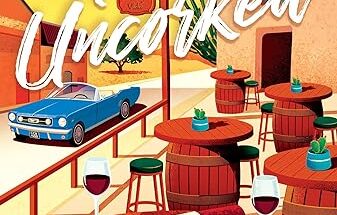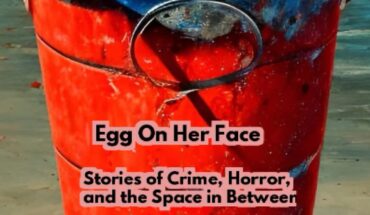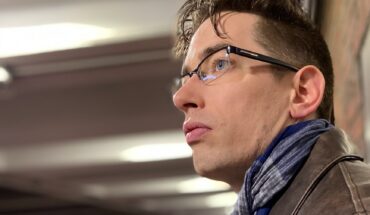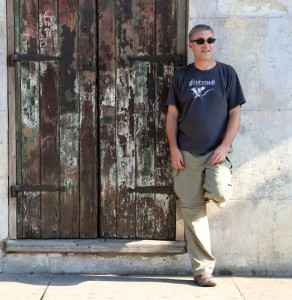 Ron MacLean has situated his new literary crime novel, Headlong, at the intersection of social activism, intergenerational conflict, and filial piety. A long-time GrubStreet instructor and enthusiast, Ron took time out from his hectic launch schedule to speak with Dead Darlings about his new book, and the unique collaboration with editor/coach Michelle Seaton that led to the novel’s completion.
Ron MacLean has situated his new literary crime novel, Headlong, at the intersection of social activism, intergenerational conflict, and filial piety. A long-time GrubStreet instructor and enthusiast, Ron took time out from his hectic launch schedule to speak with Dead Darlings about his new book, and the unique collaboration with editor/coach Michelle Seaton that led to the novel’s completion.
Dead Darlings: What drew you to this story, and this material?
Ron MacLean: I’ve always wanted to write a crime novel. For years, I’d been quietly trolling for an idea, but nothing stuck. Finally, a small item in the Boston Globe about a robbery grabbed me. A kid attacked inside a home in a wealthy suburban neighborhood, and all the thieves took was a few hundred bucks cash. That was the first seed.
That seed sprouted during the financial crisis in 2007. I was angry at the gaping abyss between rich and poor, and by the way many of those with power were and still are blithely screwing over the rest of us. I wanted to write something that expressed my anger. But I wanted to avoid activist fiction: lecture disguised as story. In a crime novel, the characters have to confront darkness; they are forced to engage it, not just complain about it. And, they have to face the fact that they’re dirty, too.
I found myself coming back to that idea I’d had, and also wondering why people like me weren’t taking to the streets over the crap that was going on. What happened, as we matured, to our sense of conviction? Why was I so inclined to grouse about issues over a drink in a bar but reluctant, for example, to join the Occupy movement? I forced myself to participate in Occupy rather than just sit on the sidelines. One thing was obvious to me: that movement was built by young people who knew their future was at stake. The tension between the complacent middle-aged cynic and the angry, idealistic young protester became the engine that drove the relationship between the novel’s two central characters, Nick and Bo.
DD: You wrote early drafts of Headlong well before the first big Occupy protest in New York in the fall of 2011. Can you reflect on what it was like to watch reality unfold around your work of fiction?
RM: Mostly it was gratifying. To see anger that I (and tens of thousands of others) felt over this country’s economic injustice finally spill into the streets into purposeful, constructive action was really satisfying just on a human level. But it also felt like a validation of what I was writing about. As writers, we can feel alone and isolated, and I know I inevitably begin to question the value of what I’m doing. Occupy was energizing to me, a huge shot of adrenaline both as a citizen and as a writer. And I think having an actual political action to channel my energy into helped make Headlong a better novel, a compelling story about people rather than an excuse for advocacy. So the urgency of Occupy really drove and streamlined the last couple of drafts.
DD: Your protagonist Nick Young is in a tough place personally at the beginning of this story. He’s come home to Boston to take care of his ailing father, but he’s having trouble locating a direction for himself. What does Nick want, and how does that desire evolve over the course of the novel?
RM: He’s in a REALLY tough place at the start. A failed marriage and failed career, neither of which Nick has faced up to. Caring for a failing and estranged father. Now he’s got nothing but time, back in the town where he grew up.
I’d say what he wants starting from page one is to put his life back together to find a Nick he’s willing to invest in, and to dive back into living. But he’s terrified to acknowledge that, and he has no idea, from where he is, how to do it.
Over the course of the novel, Nick comes first to acknowledge the scary truth that he has truly lost his way, then to catch a glimmer of something he wants to invest in, and finally to begin to do so, in his own halting fashion. Two things I really like about this book. First, the form of the crime novel forces characters to respond in crises, so Nick has to try to reinvent himself in the midst of labor politics, activist violence, and murder. Second, that Nick (flawed and problematic as he is) is willing to learn a life lesson from a teenager: the person who challenges him and kick-starts him back into his life is the 17-year-old activist son of Nick’s best high school friend.
DD: Nick’s relationship with Bo, the 17-year-old activist, is multi-layered. On one hand Nick craves the youthful vitality Bo represents. On the other hand, Nick realizes he needs to maintain distance as an adult. How did you navigate the psychology of this complex relationship?
RM: The truth is, Nick and Bo’s relationship was the only thing that came easily in writing Headlong. So easily I almost didn’t need to think about it. The psychology of that relationship is probably not unlike the psychology of my own brain - the tension between idealism and pragmatism, between youthful zeal and adult caution, between hard-edged judgment and mature compassion. These are tensions I still live, every day. I guess there are certain advantages to never having fully grown up. I will also say I had great role models for Bo: I spent two years leading an amazing church youth group in Boston, and the teens I worked with there in many ways inspired this book. Whatever is good and compelling in Bo owes a lot to them.
DD: You’ve rendered a lot of material about labor and environmental activism skillfully in Headlong, so skillfully that in the Back Bay confrontation 2/3 of the way through, I really thought I was there. How much came from memory, and how much did you have to research?
RM: First off, that’s really great to hear, because it wasn’t until I tried to write a near-riot scene that I discovered how incredibly difficult it is. To capture the sense of physical chaos, the passion of activism, how violence gets triggered, and then to render it all in terms of the emotional urgency of one particular character alive in that moment, it really stretched my skills. It’s definitely a combination of memory (I have participated in my share of demonstrations), research (I watched and re-watched a lot of video of “The Battle in Seattle” among other research), and imagination. I spent days, if not weeks, closing the door and pulling down the shades in my writing room and working to be able to see, hear, smell, feel that demonstration happening around Nick, and to understand him in the midst of it. And I have two thick file folders and tons of bookmarked material on activism of (almost) all kinds. I learned a lot.
DD: Both of your novels, Blue Winetka Skies and now Headlong, have used vivid imagery to explore American mythology and culture. The image that stays with me from Blue Winetka Skies is the abandoned drive-in movie theatre. In Headlong it’s the downtown lobby filled with garbage. How conscious are you of selecting and exploiting these images in your writing?
RM: Wow. Cool observation. I think this is one of those cases where the unconscious mind is a writer’s best friend. I’m not conscious of American mythology and culture at all as I’m writing. In the abstract, I know it’s something I’m interested in, something that haunts and informs my writing. But in Blue Winnetka Skies, I wasn’t aware of how it permeated the novel until I read the published book and started to hear from people. And now, same with Headlong. In both cases, I was aware of America as a character in the book, but the selection of specific scenes and images is always about what works best in the moment, for where I am in the story. Just wanting to do my best to make it come alive.
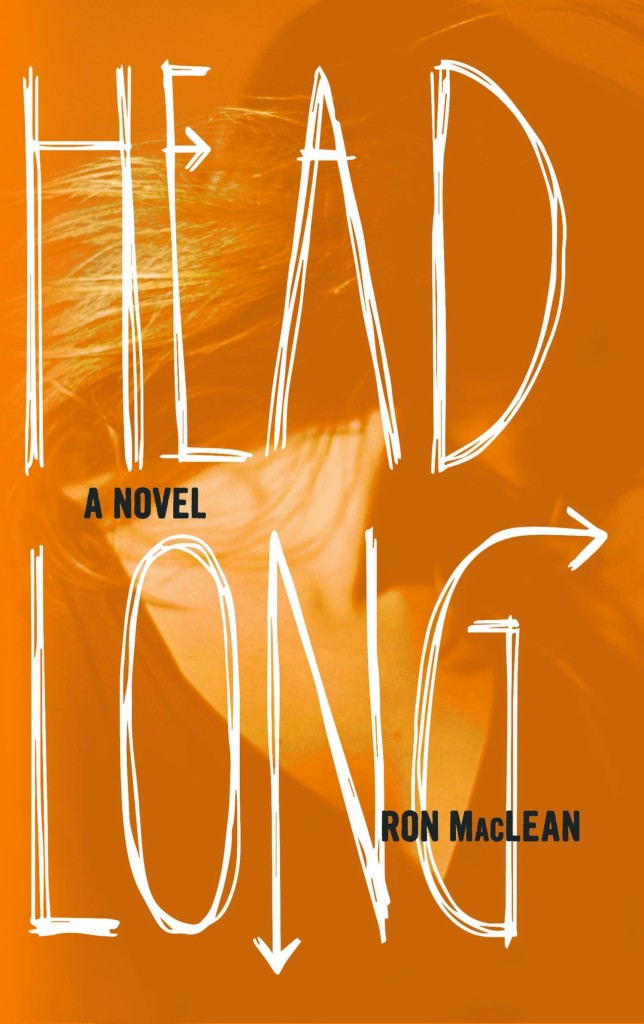 DD: You’ve spoken before about the difficulty of writing a linear narrative when your natural inclination is toward experimental forms. Reflecting on the revision process, were you able to incorporate any techniques or motifs from experimental fiction into Headlong?
DD: You’ve spoken before about the difficulty of writing a linear narrative when your natural inclination is toward experimental forms. Reflecting on the revision process, were you able to incorporate any techniques or motifs from experimental fiction into Headlong?
RM: Absolutely, but I don’t think of them as techniques specific to experimental fiction. In my work, “experimental” is an outcome that happens, not a goal I set out with. To me, structure is an organic process, one that can and should be dictated by the particular story I’m telling. In that sense, Headlong was no different than anything else I’ve written, short story or novel, “traditional” or “experimental.” I would sift through the material, groping after the threads of the story that mattered to me to tell. And then I would look to identify what nuggets resonated, what threads persisted, and how they fit together. The challenge for me came in realizing that the organic structure for this story was linear; straightforward; almost journalistic. I had to learn to honor that in a way that doesn’t come naturally to me. I think my brain is more elliptical than direct.
In revising, the tool I found most helpful is one that’s fundamental for me: the unity of opposites. It begins with two questions: what does the protagonist want? and what’s in his/her way? During every revision of Headlong, I would post those questions on the wall of whatever space I was working in. As I honed in on the structure and the story, it was incredibly helpful and, often, incredibly difficult to hone in on those questions not just for the book, but to make sure they were driving each chapter, so there was always increasing pressure on Nick, something at stake on every page.
DD: You’ve also mentioned comparables from the so-called “literary crime” genre you considered in the course of writing Headlong, such as the work of Paul Auster, James Crumley, and Raymond Chandler. Thinking about your work on a longer arc, which writers do you return to year in and year out for inspiration?
RM: Flannery O’Connor. Faulkner. Rick Bass. Jeanette Winterson. Italo Calvino. Donald Barthelme. Marilynne Robinson. Chandler. Vonnegut. Aimee Bender is becoming one of those people, as is Kelly Link. The poetry of HD and Lori Anderson Moseman. Don DeLillo is another writer I love and carry within me, though for some reason I don’t often re-read him. Right now, I’m re-reading “The Laughing Policeman” by Maj Sjowall and Per Wahloo.
DD: You’ve spoken at length about the unique partnership you formed with Michelle Seaton, editor and coach for Headlong. Post-publication, reflecting on the interaction, where do you think Michelle made the greatest impact on your novel?
RM: Easy. Two areas. One was simply the accountability and trust that come with outstanding coaching. I had run out of gas on revising. I couldn’t see clearly anymore, I had no more energy, and I had a deadline to get the manuscript done. Michelle and I set up a schedule: I had a chapter due to her every Saturday; every Monday we’d meet to discuss what needed to be done for that week’s chapter. In doing that, she helped me focus on a piece that seemed doable, rather than being overwhelmed by the entire manuscript. And, having a second brain – one that I knew and trusted – to talk through what changes were needed, and to help me over the hurdles as they came up during the week, was invaluable.
The second area where Michelle consistently added value was the book’s chapter-by-chapter pacing. As our working relationship evolved, and my trust in her grew, I would focus on being true to the characters and trusting my gut for the overall arc of the story, and Michelle would police the pacing of a particular chapter. If a chapter began on a quiet note, she’d push me to reorder or tweak the events of that chapter to ensure it ended on an intense note that would drive people forward. She was masterful in her sense of building and releasing tension.
DD: So, what’s next?
RM: Short stories. I’ve got 15 keepers out of what I’ve written over the last 2-3 years, and there’s definitely a thematic link, so I’m working toward finishing those and forming them into a collection. They’re all – in one way or another – about danger, fear, and loss. But DON’T WORRY – many of them are funny. A handful have already appeared in magazines; a few others are in circulation now; and the rest are in various stages of revision. Also, Nick Young keeps whispering in my ear, so we’ll see where that goes.

